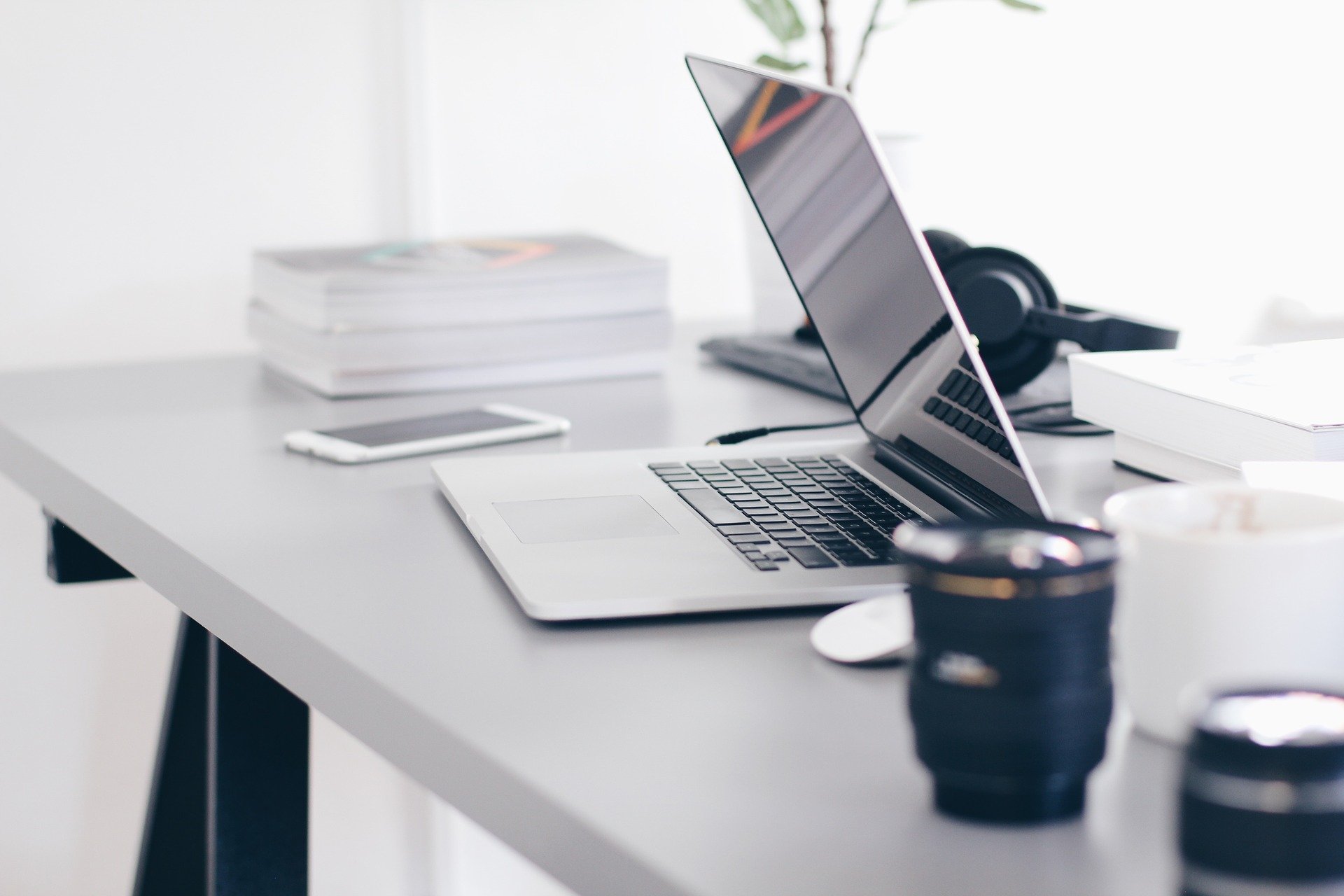
In a time where social distancing is always on the mind, how can business owners make sure their office space adheres to the rules? These office design ideas should help…
Gone are the days of crowded meeting rooms, cramped desks, and races to the communal microwave at lunchtime. COVID-19 has changed office life for everyone, but the question is, are business owners doing everything they can to protect their employees?
As a company owner, you have a duty of care for your employees. So, if staff feel as though they are unsafe coming back to work, they may choose a local solicitors, like a Taunton, Glastonbury, Bristol, Bournemouth, or Ringwood solicitors, to potentially claim compensation.
To avoid this turn of events, designing your office space to take social distancing into account is paramount. To discover some tips for doing just that, you came to the right place…
How COVID-19 Has Changed Working Life
When the UK initially went into lockdown in March, the Government told everyone who was able that they should work from home. The result was millions of people suddenly trying to stay productive while working out of their bedroom, from the kitchen table, or (if they were lucky) from their home office.
Now, eight months later, the country is an odd mix of partially and fully locked down. While here, in Devon and the surrounding areas such as Dorset and Somerset, all businesses are allowed to open, in other areas of the UK higher infection rates mean local lockdown restrictions are much stricter.
In any area of the UK, the Government recommends that people work from home wherever possible but can go back to work with one vital caveat: the workplace must be COVID-secure.
Making Workplaces COVID-Secure
If an employer is asking staff to go back to the office, they should do an in-depth health and safety review and make changes to ensure everyone is kept safe. Employee input is vital during this time, so be sure to work together to find a solution that works for you both.
Not only do you have to keep the physical health of employees in mind, you also need to bear in mind their mental health. After all, now is the time when people will likely be suffering the most.
If you, as an employer, don’t make these vital changes and want employees to come back to work anyway, you could be in breach of employment law. So, how exactly can you make sure you abide by the law? Reorganise your office!
10 Office Design Ideas for Social Distancing
Here are our top 10 modern office design ideas for social distanced interiors – curated with physical safety and mental wellness in mind.
-
Rejig the Office Layout
Sorting out a socially distanced office layout should be your number one priority. National guidelines say we should aim to stay two metres apart at all times. There are a number of ways you can achieve this new rule.
While hotdesking is a popular modern office concept, now may be the time to rethink that policy and stick to individual desks. This will make cleaning much easier and lower the risk of cross-infection.
It will also be important to implement one-way systems to efficiently but safely transport people around the office. You can achieve this by:
- Identifying commonly used or essential routes around the office and how these may need to be altered to allow for one-way systems – e.g. paths to the printers, to and from the kitchen, and access to the fire exits.
- Moving furniture, such as desks, away from the walls and windows to remove dead ends and provide extra walkways.
- Create a map of the office with the walkways and the one-way system marked.
- Put arrows down to mark the one-way system so there’s no confusion about where people should walk.
-
Put up Transparent Partitions
Sitting side-by-side (and two metres apart) tends to be safer than sitting opposite each other. You can also next-level your safety precautions by putting up partitions between desks.
This doesn’t necessarily mean we all have to sit in isolated, sterilised pods. Use plexiglass or another transparent material to create a clear but effective barrier between you and your colleagues – great for keeping people connected and for wellbeing.
-
Install or Assign Individual Storage
If your office has communal coat closets and office storage, consider reallocating or investing in new storage solutions. Ideally, each employee should have their own at-desk storage that only they will come into contact with.
Alternatively, if you have the space, get some lockers to individually assign to employees. This is a great idea if you are continuing to hot desk.
-
Plants, Plants, Plants
This one is purely for your personal wellbeing. Not only do they look attractive and brighten up the space, but plants can help relieve stress and boost productivity. Go for air-purifying varieties to improve the air quality of the office, such as:
- Pothos: almost impossible to kill and thrives in darker spaces.
- Peace lily: easy to care for, does well in low light and produces beautiful white flowers.
- Spider plant: again, almost impossible to kill and fast growing so cost-effective – expect baby spider plants in your near future.
-
Transform Meeting Rooms into Extra Workspaces
Unfortunately (or fortunately depending on your idea of a productive time), company-wide meetings in crowded rooms won’t be making a comeback any time soon. So, you can use these spaces for other purposes.
Instead of leaving your meeting rooms empty, set up extra desks to help your social distancing endeavours. This will help to alleviate space pressures on your main workspaces.
-
Place Hand Sanitiser Strategically
Set up disinfecting stations with hand sanitiser at strategic points around your office, such as:
- At the front door or reception area: encourage people to sanitise their hands when they come in from outside.
- Communal spaces: put hand sanitiser in places where people tend to congregate and are, therefore, higher risk.
- Stairwells and lifts: contact with handrails or lift buttons is sometimes inevitable so the risk of infection is higher.
- Toilets and washrooms: ideally, people should be thoroughly washing their hands rather than just relying on hand sanitiser. However, sanitiser can help remind people of their responsibility to themselves and their colleagues.
- Kitchens and break out areas: again, it is important to encourage people to wash their hands before they eat or touch anything in the kitchen or break out area. However, placing hand sanitiser can help remind them of their responsibilities
-
Prioritise Materials That Can Be Easily Wiped Sown
Consider removing soft furnishings and things like fabric workspace dividers, which can be hard to disinfect and increase the risk of infection. Prioritise surfaces that can be wiped down easily to be as safe as possible.
-
Install Hands Free Doors
Reduce contact and the risk of cross-infection as much as possible by installing restaurant-style kick plates and foot handles at the bottom of the doors wherever possible. This enables people to open a door without using their hands; an hygienic solution that would benefit people post-COVID as well.
-
Make Use of Smart Technology
Also, in the interest of reducing contact around the office and cross-infection, consider investing in some smart technology solutions. For example, installing a virtual assistant that allows people to control the lights is a good idea. This can also cast videos and presentations to screens around the office from a mobile phone.
-
Rearrange Break Rooms for Social Distancing
It might be tempting to ban people from communal break rooms altogether and tell them to have lunch at their desks. However, in such uncertain times, mental health also needs to be a priority.
Consider rearranging break rooms so that seats are two metres apart and facing away from each other. Tape the tables and chairs to the floor to prevent them from being moved. This will allow people to take well-earned down time away from their desk and spend time with their colleagues while staying safe.
4 Home Office Design Ideas
Not everyone is planning to go back to the office. Many of those are working on a flexible or ‘staggered’ rota to reduce the number of people in the office at the same time. If you are still spending some or all of your time working from home, here are a few personal office design tips:
- Separate Your Workspace from Your Living Space
It’s important for mental health to keep work and home life as separate as possible. Ideally, you should have a separate home office which is just for work.
However, this can be incredibly difficult if you live in a small space or a shared house. If you don’t have a dedicated office, here are a few tips:
- Try not to set up your workspace in your bedroom: your brain may associate being in that room with being active and it could end up disrupting your sleep.
- Pack up your work space at the end of the day: especially important if your workspace doubles as a living space, such as your kitchen table. Once you’re finished for the day, close down your computer and move it somewhere else to reclaim your living space. It may be a hassle to do every day, but it can do wonders for wellbeing.
-
Get Some House Plants
Plants at home can have the same benefits as plants in the office. Go for air-purifying varieties to improve air quality in your work from home space.
-
Make Sure You Have all the Equipment you Need
Don’t be afraid to ask your employer for whatever you need to work comfortably from home. Even remotely, they are still responsible for your health and safety.
Additionally, ask your employer to carry out an occupational health assessment of your homeworking environment. This way, they can help you make positive changes if necessary, such as providing you with:
- A proper office chair that can be adjusted.
- If you work from a laptop, a separate mouse and keyboard.
- A wrist rest for typing and using your mouse.
-
Surround Yourself with Inspirational Things
When working from home, it can be difficult to get the productivity cogs turning. At the office you can talk to colleagues or simply soak up other people’s motivation, but that’s harder to do at home. Instead, surround yourself with things that help motivate you, such as:
- Prints with your favourite inspirational quotes.
- A noticeboard to cover with post-its, to do lists and general work-related musings.
- A candle with an invigorating scent.
Finally… the best COVID-secure office interiors focus on mental health as well as physical health
Remember that, during these challenging times, your mental health is just as important as your physical health. If you feel unsafe at work because your employer’s COVID-secure office designs do not go far enough, try to work with them to find a positive solution.
Ultimately, though, if you do not think a safe return to the office is possible, no matter how many design tips you implement, it is perfectly acceptable to avoid it. If so, you can request that you be allowed to continue working from home until the storm has passed.
As an employer, be sure to prioritise and respect these decisions, and you should maintain a happy and healthy working environment.





Leave a Reply